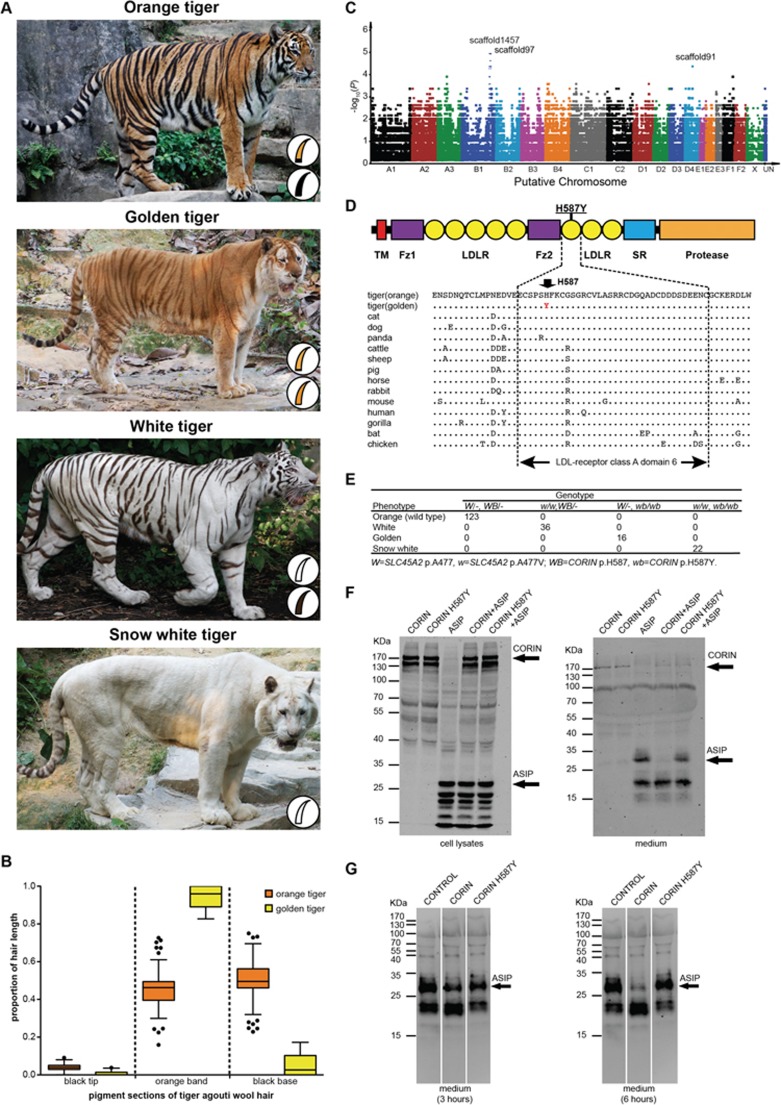Figure 1.
(A) The four coat color morphs known in tigers. Schematics of tiger zigzag hairs from the background (upper) and stripes (lower) are shown for each morph. (B) The pigmentation pattern difference in agouti zigzag hairs from orange and golden tigers. The length proportion of each component (black tip, agouti band and black base) of agouti hair is presented using Tukey's boxplots. (C) Genome-wide association plot of the tiger wideband gene. Tiger scaffolds are arranged and grouped into putative chromosomes (x axis) based on homology to the cat genome (Felis_catus 6.2). SNPs within every 500-Kb window are plotted in a single column. Scaffolds with a high level of association (P < 0.0001) are marked with scaffold names. (D) Schematic diagram and partial alignment of CORIN show that H587 is located in the LDL receptor class A domain 6 and is evolutionarily conserved among vertebrates. (E) Correlation between tiger coat color phenotypes and genotypes of SLC45A2 p.A477V and CORIN p.H587Y. (F, G) Western blot analysis of lysates and medium from transfected HEK293 cells. The protein molecular weight markers are labeled on the left side of each figure. The vectors used for transfecting HEK293 cells are specified on the top of each lane. CORIN (∼170 KDa) and ASIP (∼28 KDa) with expected molecular weights are indicated by arrows. Data are representative of three independent replicas. (F) The expression level of CORIN was not affected by the p.H587Y mutation (left panel). ASIP was absent from the medium of HEK293 cells co-expressing ASIP and wild-type CORIN, but present in the medium of HEK293 cells co-expressing ASIP and CORIN p.H587Y (right panel). (G) The culture supernatants from ASIP-expressing cells were added to cells transfected with wild-type or mutant CORIN and incubated for 3 hours (left panel) and 6 hours (right panel), respectively. Secreted extracellular ASIP was degraded in the presence of wild-type CORIN, but not the CORIN p.H587Y variant.

